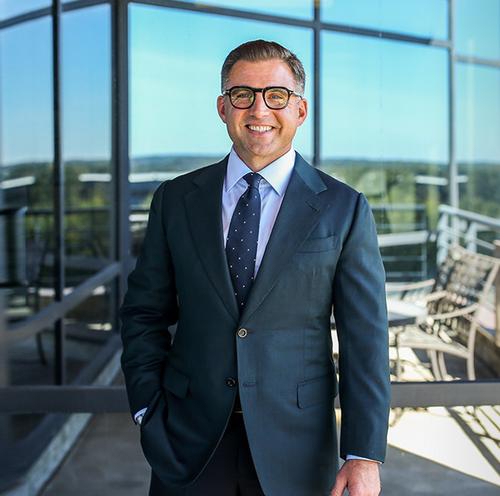Licensed drivers take on a duty of responsibility to behave safely and lawfully every time they get behind the wheel and on the road. Even so, accidents are still prone to happen, whether by their own fault or the fault of another driver. They can be due to a misjudgment in driving maneuvers or a misunderstanding of how traffic laws work, and one of the most common accident scenarios that encompasses both of these are left-hand turn accidents.
Q: What is a left-hand turn accident?
A: Left-hand turn accidents occur when a vehicle attempting to make a left turn intersects with an oncoming vehicle traveling straight in the lane they are attempting to turn across. They happen most often at intersections but can also occur when cars leave driveways or parking lots. The impact can occur by the oncoming vehicle hitting the car turning left or the left-turning vehicle colliding into a passing car going straight.
Q: Why do left-hand turn accidents happen?
A: Left-hand turn accidents most often happen when one or more of the drivers involved in the crash makes a misjudgment or is driving recklessly. For example, the left-turning vehicle may be waiting for a break in oncoming traffic that’s long enough for them to accelerate through their turn, and if they misjudge that distance or speed, it can cause an oncoming car to crash into them. Similarly, if the left-turning car doesn’t wait long enough for the last car before the break to pass, it may crash directly into them as they make their turn.
It’s also possible for the oncoming vehicle to cause a left-hand turn accident in some cases. For example, if they are driving well above the posted speed limit, that makes it harder for the left-turning driver to judge when they will reach the area of the turn, causing a crash. Or if the car traveling straight crosses into the intersection when it’s not their turn, it also has the potential to cause a crash.
Q: What kind of damage can result from a left-hand turn accident?
A: Left-hand turn accidents are one of the most dangerous accident scenarios on the road and can cause considerable damage. They can result in head-on collisions, rear-end collisions, and T-bone collisions. This can total the vehicles involved and cause severe damage to drivers and passengers, such as spinal trauma or traumatic brain injuries. If the intersection is particularly busy, the crash can also include multiple vehicles and even more widespread damage as a result.
One of the most dangerous situations on the road is when a semi-truck or other commercial truck vehicle attempts to make a left-hand turn. They are larger and slower vehicles, which means judging how and when to make these kinds of turns is an even more delicate decision to balance. It’s why so many trucking companies prohibit their drivers from ever making left-hand turns.
Q: Who is responsible for left-hand turn accidents?
A: The left-hand turning driver or the oncoming driver could be found fully or partially at-fault for a left-hand turn accident. Sometimes, there can be other factors at play that may cause or contribute to the accident. If external factors such as poor road design, inadequate signage, malfunctioning traffic signals, or construction interfere with safe driving, the people behind those factors might be held responsible for any resulting crash.
But more often than not, it is found to be the left-hand turning driver who is totally or mostly responsible for the accident. They are most often the vehicle that is required to yield the right of way to oncoming traffic within an intersection, and when they don’t do so appropriately, it can result in a collision.
Q: How is fault determined for a left-hand turn accident?
A: Determining fault in a left-hand turn accident all comes down to exactly how the accident was caused. Through crash evidence, witness statements, traffic camera footage, and the type and extent of injuries suffered by those involved, insurance companies and personal injury lawyers can often deduce what choices were made behind the wheel and what the consequences of those choices were. They then use that evidence to demonstrate who should be found at-fault.
As mentioned, it’s also possible that more than one person or entity might be found at-fault for the accident. Being comparatively at-fault means that your decisions or maneuvers contributed to the accident occurring but were not found to be the sole cause of the resulting damage. It could be that the other driver involved also made poor decisions to contribute to the crash occurring or making it worse, and so they, too would be held comparatively at fault. In those cases, any compensation awarded to the plaintiff who filed the case by an insurance company or trial jury would likely be lessened.
Q: How can I avoid being involved in a left-hand turn accident?
A: Drivers can avoid being involved in a left-hand turn accident by taking several proactive steps to minimize the risk of left-hand turn collisions occurring. Employing patience and a cautionary approach when attempting to make a left-hand turn will help you ensure ample time and a safe gap in oncoming traffic. Using the proper turn signals to denote you’re making the turn is also key, as is checking all mirrors and blind spots for approaching vehicles, pedestrians, or cyclists. In both cases of the left-hand turning driver or oncoming driver, observing proper rights-of-way, obeying posted speed limits, and avoiding distractions while driving can also help dramatically reduce the chances of a left-hand turn accident occurring.

